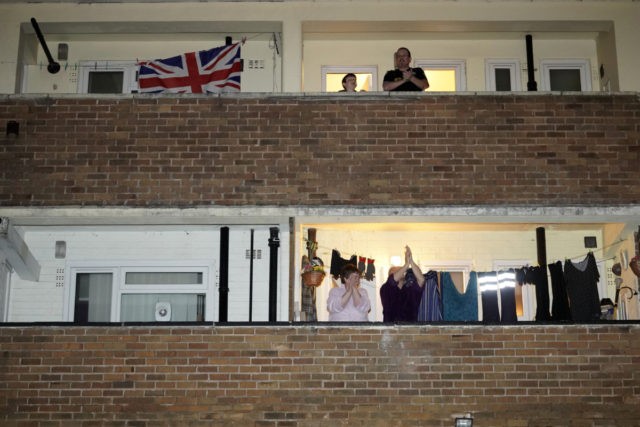The doctor behind a U.K. college study on the impact of the coronavirus that predicted a doomsday scenario absent any prevention measures and prompted the U.S. government to take action against the deadly disease is now painting a more optimistic picture that is in line with President Donald Trump’s plan to open the American economy by Easter.
While briefing the U.K.’s parliamentary select committee on science and technology on Wednesday, Dr. Neil Ferguson, the prominent epidemiologist who led the Imperial College study, suggested that the United Kingdom can now expect his low-end death rate predictions of 20,000 deaths to come to pass if they continue to follow his initial advice of implementing extreme prevention measures.
Imperial College researchers who authored the study were able to make their initial predictions by entering coronavirus infection and death rates from China, South Korea, and Italy into epidemic modeling software and running simulations of what can happen in the U.K. and the United States.
Dr. Ferguson indicated that prevention measures implemented by the government — such as social distancing and shutting down non-essential business — could make the lower end of his death projections for the United Kingdom and the U.S. a reality.
In the study, the Imperial College team highlighted three possible scenarios — no action (510,000 deaths in the U.K., over two million in the U.S.); moderate action, dubbed the “mitigation strategy” (250,000 in the U.K., over one million in the U.S.); and an extreme response, named the “suppression strategy” (a few thousand in the U.S.; 20,000 in the U.K.).
In the study, Ferguson indicated that deaths could peak at 20,000 in the U.K. and a few thousand in the U.S. if the governments implement the suppression strategy.
Such a strategy involves social distancing of the entire population, combined with home isolation of cases and the quarantine of their family, as well as shutting down public gatherings and most workplaces in addition to school and university closures.
The U.S. and the U.K. have instituted measures that at the very least echo the suppression strategy described by the Imperial College.
To keep fatalities at their lowest in the U.S. and the United Kingdom, the suppression strategy would have to be in place until a vaccine becomes available, which could take 12 to 18 months.
However, the Imperial Team noted in the study:
Such an intensive [suppression strategy] policy is predicted to result in a reduction in critical care requirements from a peak approximately 3 weeks after the interventions are introduced and a decline thereafter while the intervention policies remain in place.
On Wednesday, Ferguson reportedly acknowledged that under the prevention measures in place in the U.K. now, it will only take the coronavirus “two to three weeks” to peak and dwindle.
Imperial College researchers do warn that there could be seasonal waves of the disease, noting that it could subside, only to return later.
The original epidemiology study prompted the Trump administration to escalate its efforts to combat the deadly and highly contagious disease.
This week, President Trump has said he wants to open up the economy in about two weeks, by Easter Sunday on April 12, prompting criticism from the left.
Trump’s goal, however, is consistent with Ferguson’s estimate for when the coronavirus cases will start going down.
On Wednesday, Dr. Deborah Birx, the coordinator of the White House Coronavirus Task Force, indicated that initial infection rate predictions suggesting the deadly and highly contagious disease would infect about half the U.S. population are overblown.
She suggested that the action taken by the government, coupled with the response of the American people, will substantially reduce the infection rate.
The Imperial College study predicted that absent any action to stem the spread of the disease, coronavirus would infect about 80 percent of the U.S. population.
Dr. Ferguson did not revise his original predictions on Wednesday, as suggested by several media outlets. What the doctor said is that the U.K. is on its way to keep the death rate at the lower end of his projections, courtesy of the government response to the pandemic.

COMMENTS
Please let us know if you're having issues with commenting.